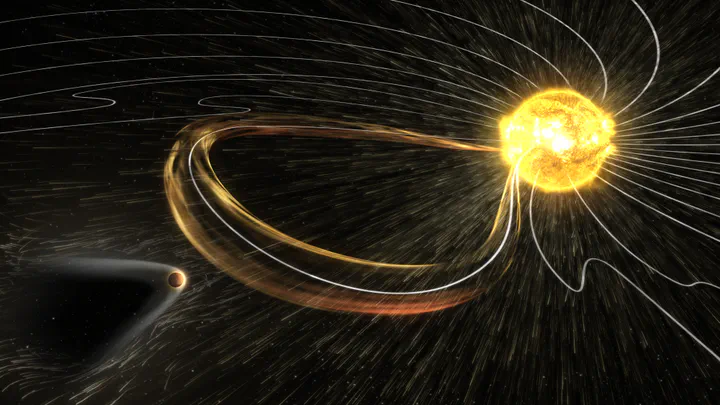Suprathermal electrons at interplanetary shocks
 Artist impression of the solar wind and magnetic field interactions
Artist impression of the solar wind and magnetic field interactionsSuprathermal electrons have energies of about 70 eV to 2 keV and they follow the interplanetary magnetic field line as they propagate through the heliosphere. This means that their pitch-angle distributions contain information about the magnetic topology of the solar wind.
The project aimed to characterise and examine suprathermal electron populations associated with IP shocks. We used electron angle-angle distributions, measured in situ by the Cluster spacecrafts, during normal solar wind conditions, in the presence of whistler waves and during events associated with IP shocks. The shape of the distributions was examined using spectra of fitted spherical harmonics. This method is a quick way to characterise observed spectra and can be used for Solar Orbiter data, allowing us to study the evolution of the distributions during the propagation at an IP shock.